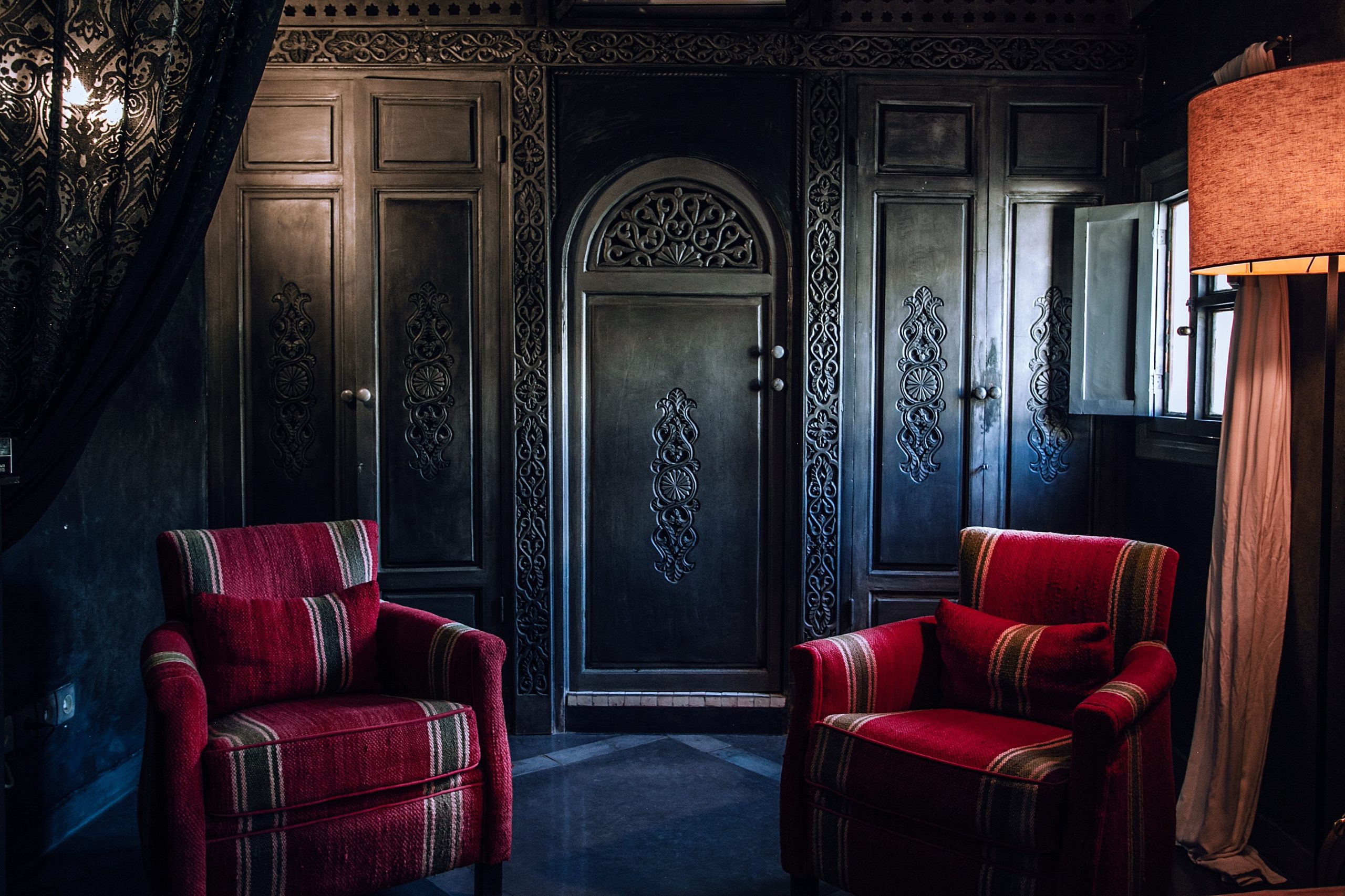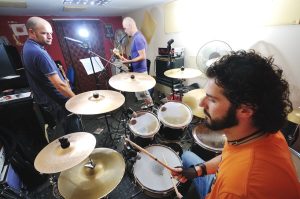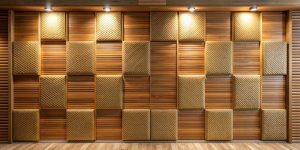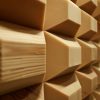How to soundproof an old house
The benefits of soundproofing your home are fairly obvious. You won’t bother your neighbors when you listen to music or host parties, and you aren’t bothered by the sounds of lawnmowers and other neighborhood noise drifting into your space. The arguments for soundproofing are all there and all valid.
It’s easiest to soundproof your home during construction since you can add materials to your walls before closing them up. If you own an older home, you may need to open up the walls, depending on the level of soundproofing you are looking for. Learning how to soundproof an old house takes a little effort, but it’s certainly doable. Let’s take a look at the reasons one might choose to soundproof their homes and how to go about it.
Why soundproofing old houses is a sound investment
Most people see their homes as their safe spaces. It provides a respite from the hectic worlds of work and outside responsibilities and gives us a place to let our hair down and relax. But how can you relax if you can clearly hear everything happening outside your walls? It’s tough to block it out and take that time for yourself.
When you love your historic house, but not the noisy pipes or nearby freeway, it’s time to invest a little time learning how to soundproof an old house.
Common sources of noise pollution
The first step in devising a soundproofing solution for your home is to determine what kind of sounds you’re dealing with. While you can go all out and set your house up for midnight practices of your heavy metal band, most of us don’t require that level of insulation. Identify the sounds you are trying to subdue, and you can properly plan for a solution that solves your sound problems at a price that doesn’t break the bank.
Loud pipes
A very common source of unwanted noise in old homes is the pipes. Every time your freezer fills the ice tray, or you run the faucet, you can hear noises emanating from the walls through which the pipes run. Maybe your long, hot showers could be more peaceful by soundproofing bathroom pipes. Maybe your garden hose creates considerable vibrations inside your otherwise peaceful home. Soundproofing your pipes allows you to get your chores done without spoiling your solitude.
Noisy neighbors
One of the most common reasons for researching how to soundproof an old house is the dilemma of the noisy neighbor. When you’ve got a noisy neighbor, you’ve got a few options, and they aren’t ideal. You could call them and ask them to be quiet, but that may not go over well. You can call the cops and ask them to do the same, but that will likely go over worse. By soundproofing your home, you can reduce how much sound makes it to your ears, and the problem may simply fade away.
Members of your own household
Sometimes our nuisance noise originates from inside our own homes. Maybe you work early, while your partner likes to stay up late watching movies or listening to music. Having excess noise in the house when we are trying to sleep can make it extremely difficult to catch a few Z’s. If this sounds like you, you need to soundproof the interior walls and doors if you want to peacefully coexist.
Identifying the sources of your nuisance noises and the kind of quiet spaces you are trying to create is a great starting point, but it will take some work to solve the problem. You need to learn how to soundproof an old house. Here’s how to do it.
How to soundproof an old house
Older houses can come with some advantages and some disadvantages when it comes to soundproofing. Solid wood doors may block more sound than the hollow doors common in more recent construction, but the old windows may leak far more sound than their more energy efficient, double glazed counterparts. Let’s take a look at some key areas to focus on when learning how to soundproof old houses.
The windows
One of the simplest and most impactful things you can do to keep outside sounds out and inside sounds in, is to make sure your windows are up to par. If they’ve been recently replaced, you may be good to go. If, however, you are working with the original windows or replacements that are getting to be a few decades old, you’ll probably want to shore them up to cut down on sound transmission. You’ve got two main routes here.
New windows
The best way to soundproof the windows in your old home is to install new ones. Improved technology means that the new set will deliver both thermal and acoustic benefits. Not only will they help soundproof your house, but they’ll also help reduce your energy costs.
Window inserts
If you can’t stand the thought of parting with your historic windows, you can go the window insert route. Window inserts are available in standard and custom sizes and can deliver the same benefits as a new set of windows while preserving the look of your current windows.
Interior rooms
The insulation in interior walls of old homes leave much to be desired. Learning how to soundproof an old house means learning how to add both mass and density to your walls. If you’re trying to keep lower volume sounds like speech and TV from drifting into adjacent rooms, you’ve got a couple of options.
First, you can open up the walls and fill the empty spaces with high quality insulation. Luckily, it’s not difficult to learn how to insulate an old house. Like window treatments, the insulation will pull double duty. It will help regulate the temperature from one room to another, but it will also help keep vibrations from passing between one layer of the wall to the other.
In many old homes, the walls are made of plaster, so you’ll have to alter your approach when learning how to insulate an old house with plaster walls. It’s a big job, so consider applying green glue and a layer of sheetrock. It will add some decent mass and density and is a much easier solution than removing walls.
The doors
When dealing with sound on the inside of the house, one of the main places sound passes from one room to the next is through the doors. If you’ve already got heavy, solid doors, you’ve got a great head start. If not, replacing your thin doors is the first step. You can achieve some level of success by filling the empty space in a hollow door with sand or something similar, but that can be a lot of work and may not save you that much money. The best option is to replace them with heavy, solid doors.
Seal the sides and top
Once you’ve got sound-stopping doors, you’ll need to tackle the spaces around the door. Plenty of air can make its way through the spaces around the door itself, so sealing them up is key to keeping sound out. Installing weather stripping or gaskets around the door jamb will ensure a proper seal on the top and sides and is a great choice. But, don’t forget the bottom. That is where much of the sound passage is likely to occur.
Fit the bottom with a door sweep
For the space at the bottom of the door, consider door sweeps. They are available in multiple styles, and some work better than others. If you have a smooth, hardwood floor beneath the door, you may be able to get away with a standard door sweep that creates a complete seal across the bottom gap. If you have carpeting or prefer a smoother swinging door, an automatic door sweep is the ticket. When the door is open, an automatic door sweep stays up, but when the door is closed, the contact between the door and frame will cause the sweep to lower, creating a very strong seal.
Stepping up to professional grade materials
You can get okay results with weather stripping and a door sweep from a home improvement store, but they aren’t made for sealing doors for sound, and you might be a little underwhelmed by their performance. Since you’re going to the trouble to learn how to soundproof an old house and actually beginning the process, you’ll get the best performance with a professional door seal kit. They contain all the necessary pieces and are specifically designed to keep the sound out.
The basement
If you’ve got a basement, you’re already set up for a perfect space to soundproof. Whether you’re trying to keep sounds in or out, a basement is well suited because the foundation walls are usually very dense, and the surrounding earth does a great job of absorbing sound waves. Since we’ve got a great starting point, let’s take a look at how to soundproof a basement.
Windows
The weak spot in basements is the windows. Like the rest of your exterior walls, replacing any basement windows will be the single most effective way of preventing sound transmission. They are usually relatively small and less numerous than the upper levels. Replacing them with more efficient replacements won’t break the bank.
The basement ceiling
Another spot to focus your attention in the basement is the ceiling. People walking above you will create unwanted noise that you’ll want to take care of. Soundproofing basement ceilings can be pretty simple or relatively difficult, depending on the size of the renovation you are considering. Learn how to soundproof between floors in old houses before taking this project on.
Squeaky floors and loud pipes
Owners of newer homes may not have to focus on things like the pipes and squeaky, creaky floors, but they’re a pretty common complaint amongst owners of older homes. Expansion and contraction of the wood can loosen the nails that hold the floors down, and the pipes can move and rattle when water flows through them. If you want to truly soundproof your home, these are two points you should focus on.
The floors
If you have access to the subfloor, soundproofing floors in old houses can be a relatively easy fix. You can quiet your floors quite a bit by installing some screws to hold the subfloor to the joists. Unlike nails, the wood won’t slide up and down screws, meaning you’ve got fewer squeaks to deal with.
If your main concern is the sound of foot traffic on the floors above your head, there are some great options to help dampen the sound. The easiest thing you can do is to install carpeting or throw a few rugs and runners down. They will insulate the sounds of footsteps and keep them from transferring through the floor. Learning how to soundproof a floor in an old house comes down to identifying the problems that need solving and adding soft materials and dense barriers to those areas.
The pipes
Creating soundproof plumbing pipes may be easier than you think, as long as you have access to them. If they run below the main floor, in an unfinished basement, you’ve got a major leg up. If not, or if they run through the walls on finished floors, you’ve got a little more work to do. The steps will remain largely the same, but if you’ve got to cut into walls to reach them, you’re in for a much messier job.
Vibrations in pipes are generally caused by either water moving through them or the vibrations of the pipe itself, which can transfer to other pipes, or the joists or studs they are attached to. You may be able to reduce the vibrations by simply turning down the water pressure, but that won’t always work. If not, you need something to absorb the vibrations.
You can isolate vibrations caused by water pipes with acoustical lagging. Acoustical lag is a sound barrier made with multiple layers, providing insulation and mass around your pipe. Wrapping problem pipes with lag will reduce a good amount of the sound from pipes, and adding mass to the walls themselves will likely take care of the rest.
If you don’t know how to soundproof an old house, consult a professional
Soundproofing can be a big job. Professionals already know how to soundproof an old house, so getting a second opinion may mean the difference between a long, spendy endeavor and a quick and peaceful one. Take the time to do it right, and the time and money will be well spent.

















Add comment
You must be logged in to post a comment.